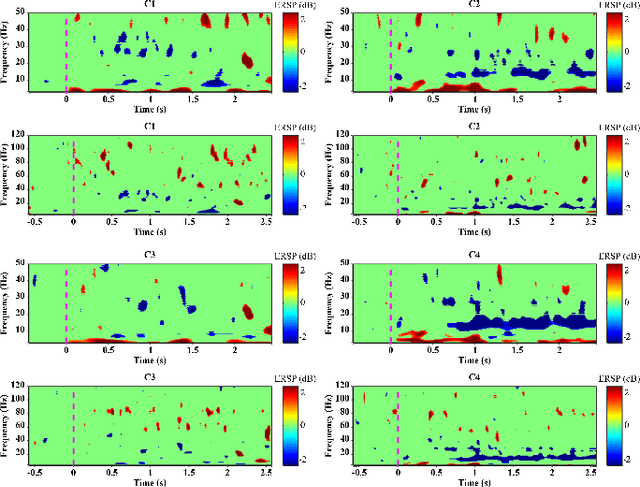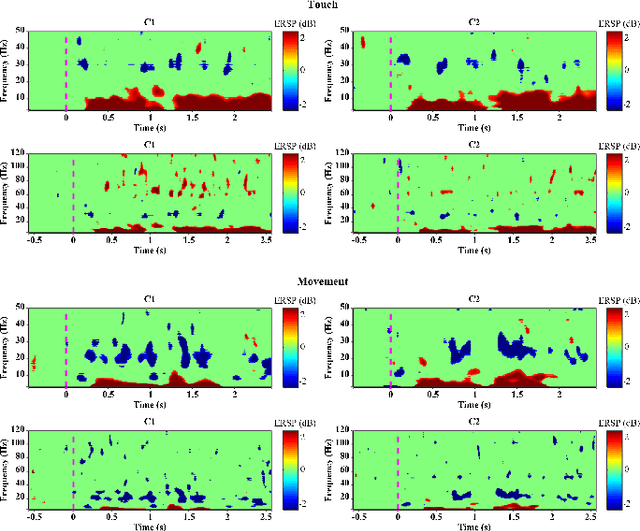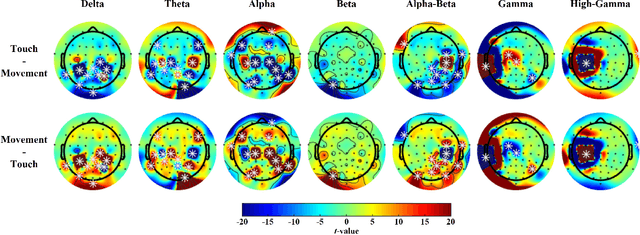Recognition of Tactile-related EEG Signals Generated by Self-touch
Paper and Code
Dec 14, 2021


Touch is the first sense among human senses. Not only that, but it is also one of the most important senses that are indispensable. However, compared to sight and hearing, it is often neglected. In particular, since humans use the tactile sense of the skin to recognize and manipulate objects, without tactile sensation, it is very difficult to recognize or skillfully manipulate objects. In addition, the importance and interest of haptic technology related to touch are increasing with the development of technologies such as VR and AR in recent years. So far, the focus is only on haptic technology based on mechanical devices. Especially, there are not many studies on tactile sensation in the field of brain-computer interface based on EEG. There have been some studies that measured the surface roughness of artificial structures in relation to EEG-based tactile sensation. However, most studies have used passive contact methods in which the object moves, while the human subject remains still. Additionally, there have been no EEG-based tactile studies of active skin touch. In reality, we directly move our hands to feel the sense of touch. Therefore, as a preliminary study for our future research, we collected EEG signals for tactile sensation upon skin touch based on active touch and compared and analyzed differences in brain changes during touch and movement tasks. Through time-frequency analysis and statistical analysis, significant differences in power changes in alpha, beta, gamma, and high-gamma regions were observed. In addition, major spatial differences were observed in the sensory-motor region of the brain.
 Add to Chrome
Add to Chrome Add to Firefox
Add to Firefox Add to Edge
Add to Edge